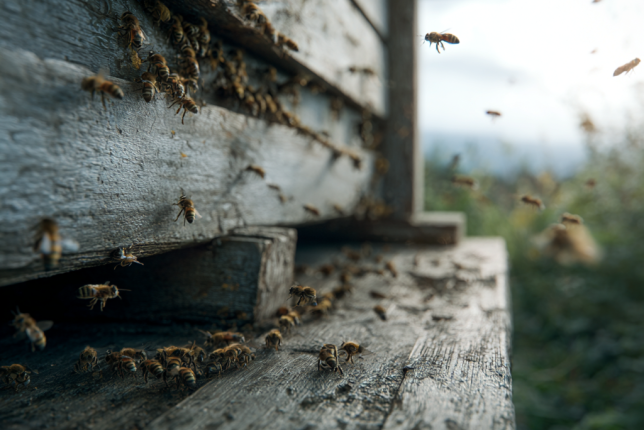Bees on the Roof: A New Project to Improve Bee Vitality in the Face of Climate Change
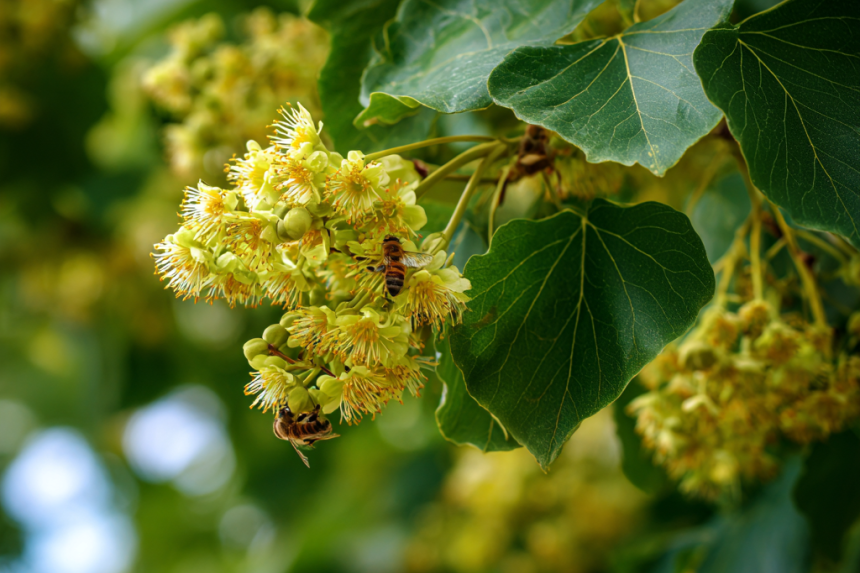
Soon, the rooftop of the Latvian State Institute of Wood Chemistry will be buzzing not only with sunshine and wind but also with the activity of diligent bee colonies. Preparations for this moment are already in full swing. The project’s experimental apiary is taking shape with 36 hives, each to be equipped with a sensor network for real-time monitoring of bee life processes.
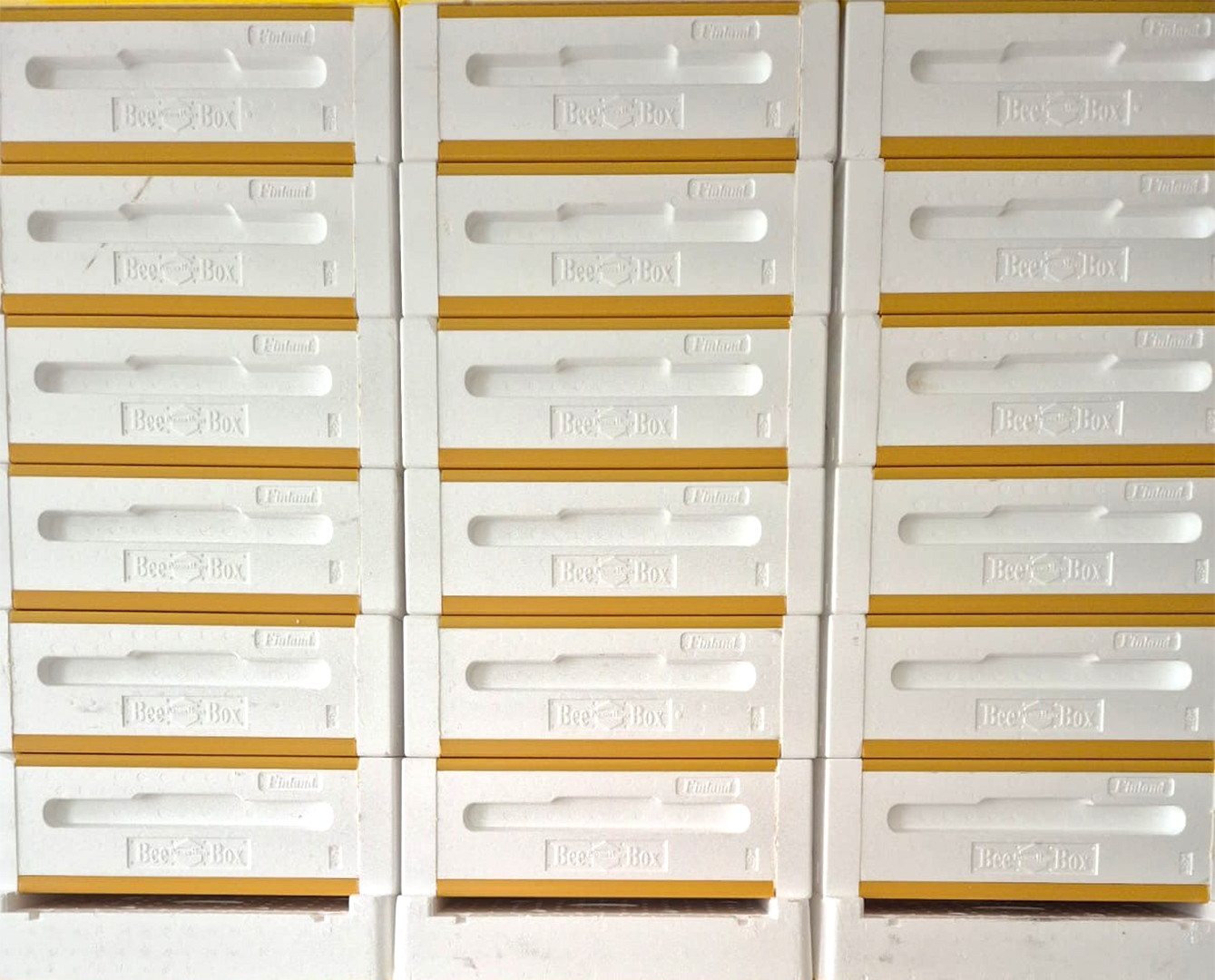
This is one of the central elements of the new project “Development of a method for beehive shielding using thermoreflective surfaces to reduce bee losses under rapid climate change”, led by Dr. biol. Ulla Milbreta, a researcher at the Cellulose Laboratory.
Do you recognize what’s in this photo?
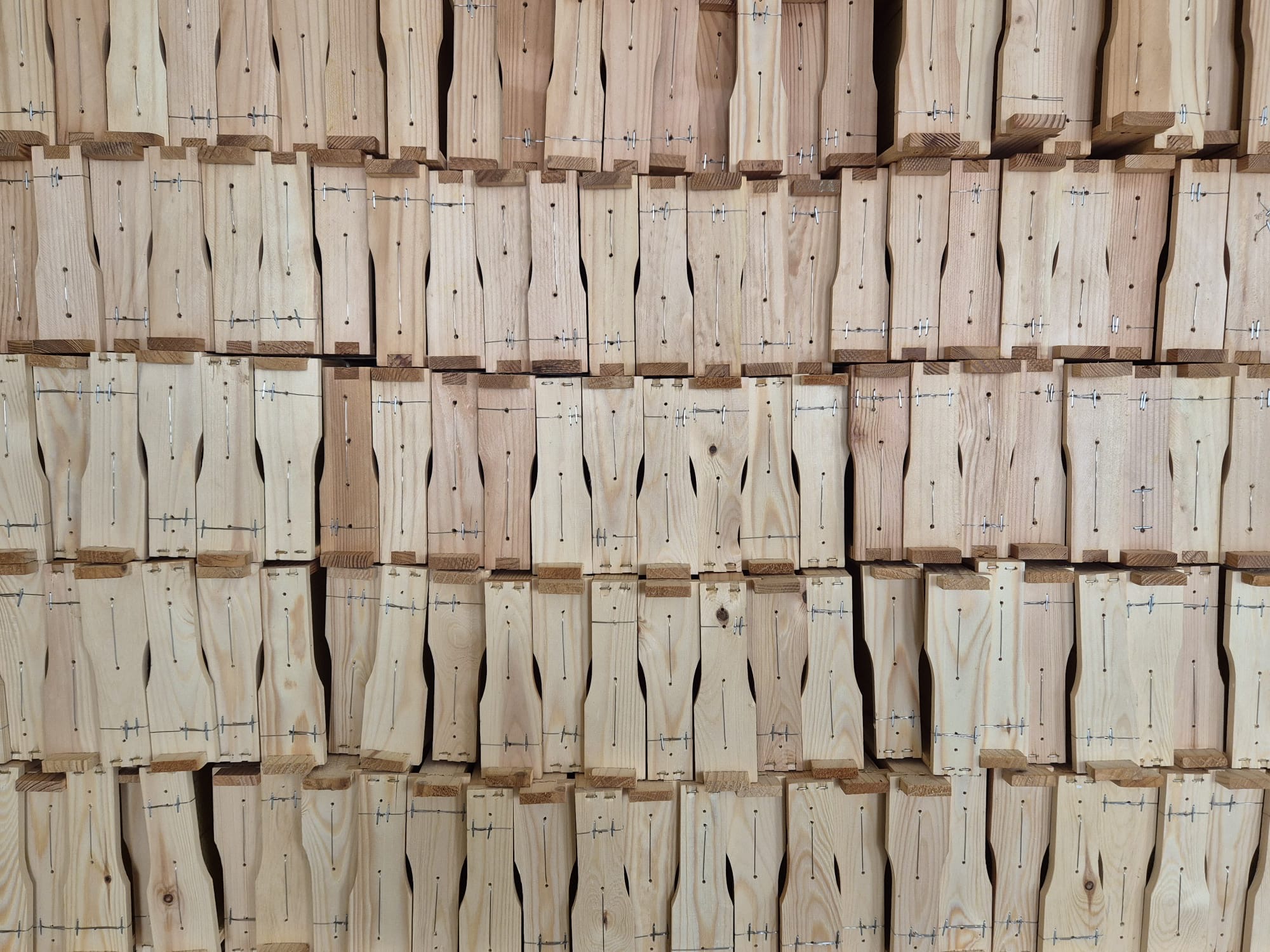
Many might not know that these are wooden frames – one of the most essential elements inside a hive, where bees build and store their wax and honey. The frames are now being prepared and arranged so they can soon be placed into the new hive bodies.
The fully assembled hives with bright, colorful lids – waiting for their industrious residents.
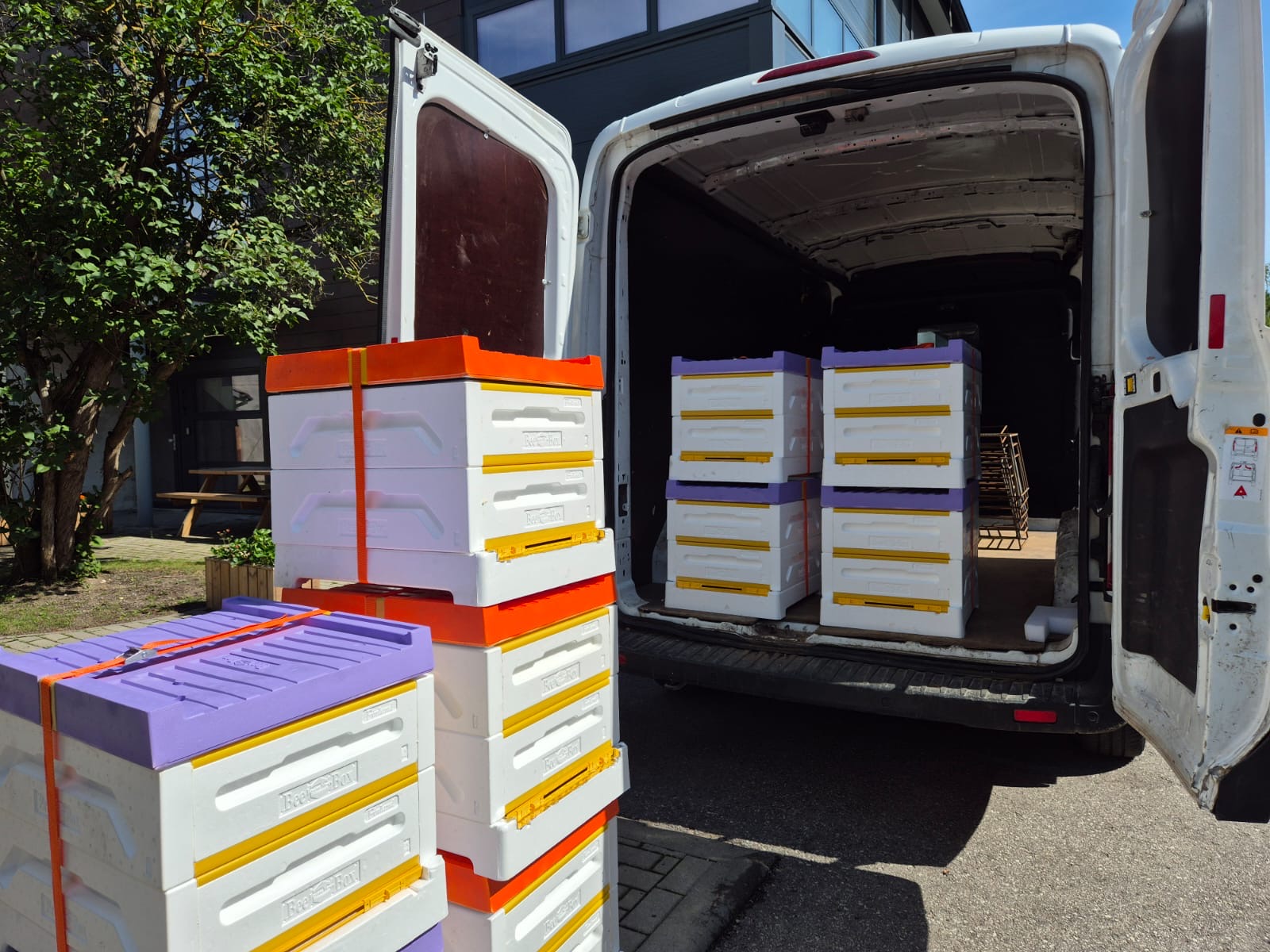
In the coming days, some of these hives will welcome bee colonies, which will then settle into their new homes on the institute’s rooftop. There, in a sensor-equipped apiary, each hive will record in real time changes in weight, temperature, and humidity, providing scientists with valuable data on bee living conditions in different hive setups.
This is only the beginning – very soon, a unique experiment combining materials science, beekeeping, and climate change research will commence on the LSIWC rooftop.
Why it matters
Bees are an integral part of the ecosystem – they pollinate more than 75% of the crops used for food production. Rising bee mortality, driven by climate change, threatens not only agricultural yields and price stability but also the diversity of natural flora. Winter cold, sudden temperature fluctuations, and humidity changes can prove fatal even to strong colonies.
Project goal
In collaboration with its partners SIA Salix and SIA RS Bite, LSIWC aims to develop an innovative approach to hive construction and management that will help bee colonies better adapt to rapidly changing climatic conditions. This approach will build on advances in materials science combined with modern bee monitoring systems. Thermoreflective surfaces will be applied to the inner walls of hives to reduce the impact of sharp temperature and humidity fluctuations, one of the main causes of winter bee mortality.
At the same time, a new environmentally friendly composite material will be developed, combining the mechanical strength of wooden structures with the thermal insulation and light weight of expanded polystyrene (EPS). This material will be produced from polyurethane foam and natural fibres, ensuring optimal thermal balance, strength, and compliance with long-term beekeeping requirements. The material will be carefully developed and its properties evaluated by our researchers Dr.sc.ing. Mārtiņš Andžs un Ph.D. Miķelis Kirpļuks. Their focus will include specific parameters such as heat capacity, thermal conductivity, and mechanical resistance, ensuring that the material can provide a stable and safe environment for colonies throughout the year.
The new hive designs will be tested in the experimental rooftop apiary at LSIWC, where 36 hives will be equipped with modern sensors to record, in real time, weight changes, internal hive temperature and humidity, as well as external environmental parameters. This will enable a scientifically sound comparison of the impact of shielded versus control hives on bee vitality.
Over the course of three years, data will be collected to compare the survival rates of colonies in shielded and control hives made from both wood and EPS. In parallel, the new composite material will be developed and tested, with thorough evaluation of its heat capacity, thermal conductivity, and mechanical strength.
Broader significance
This project is not only about beekeeping – it is about climate adaptation and food security. Innovative solutions, such as shielded, climate-resilient hive walls or data-driven hive management, can become important tools for protecting bees in Latvia and across Europe.
The project is implemented under the European Agricultural Fund for Rural Development and the Common Agricultural Policy Strategic Plan 2023–2027, within the activity “EIP Operational Group Project at Sectoral Level”.
Project description: Development of a method for beehive shielding using thermoreflective surfaces to reduce bee losses under rapid climate change
